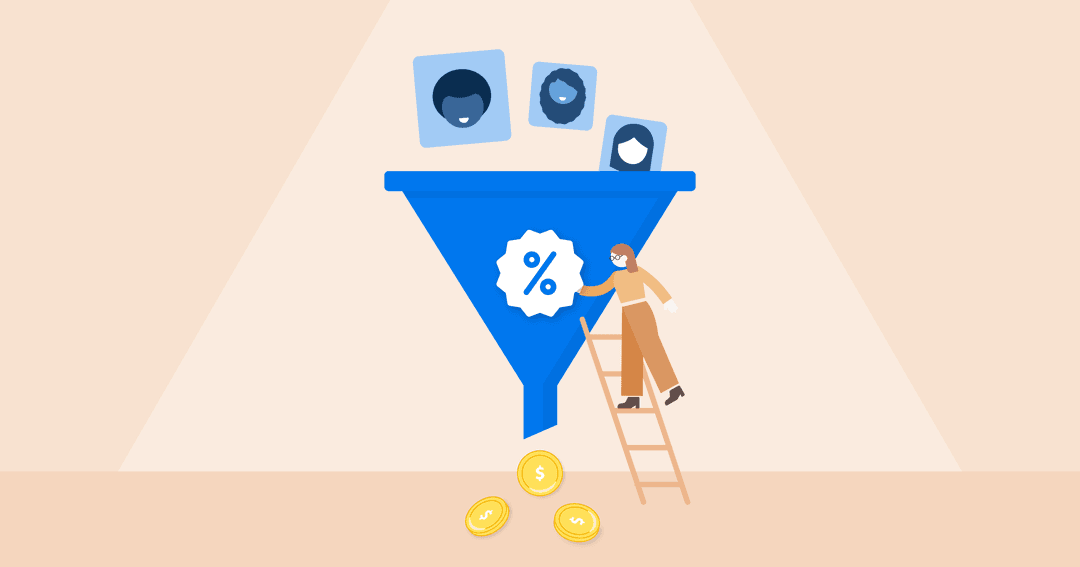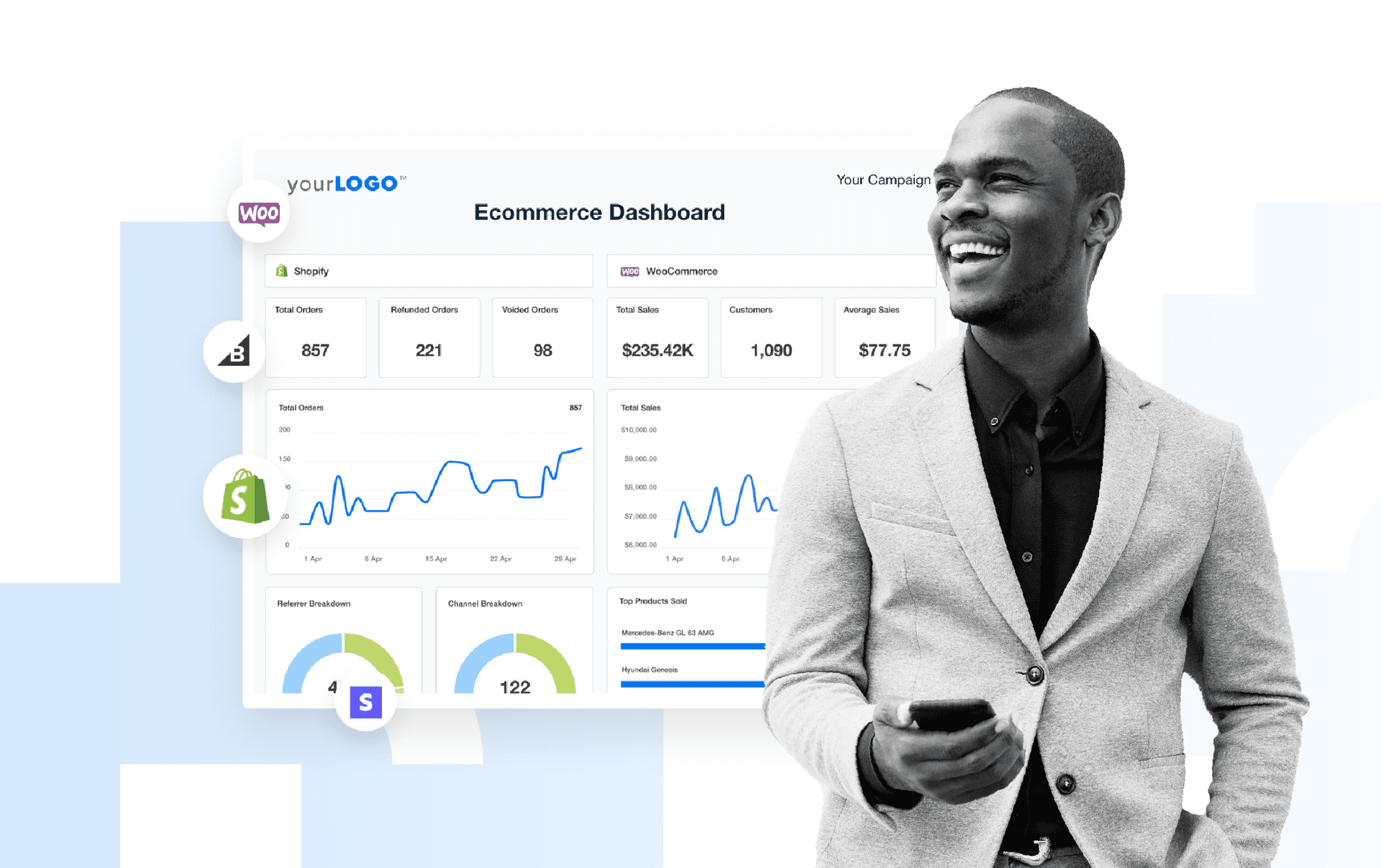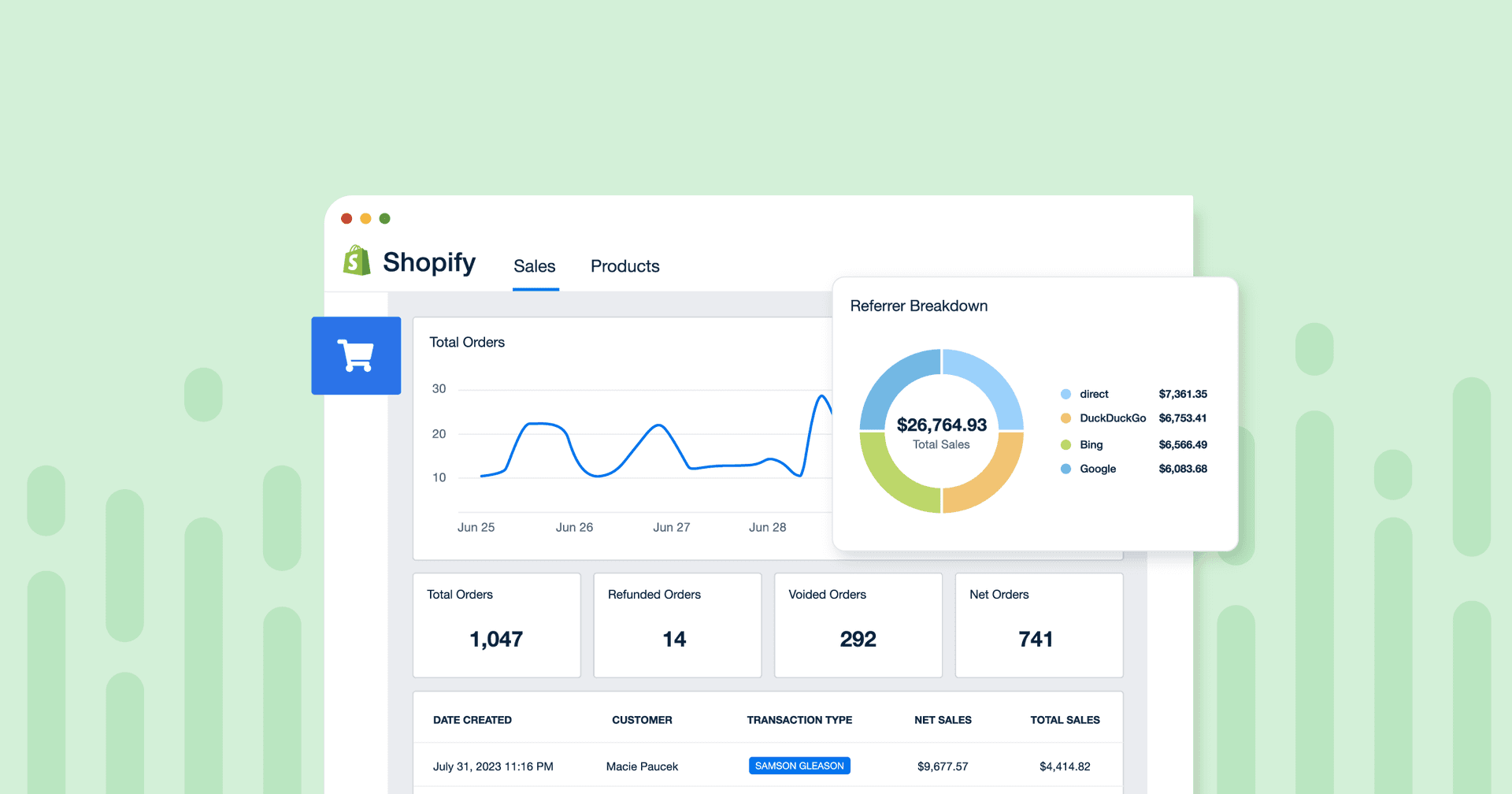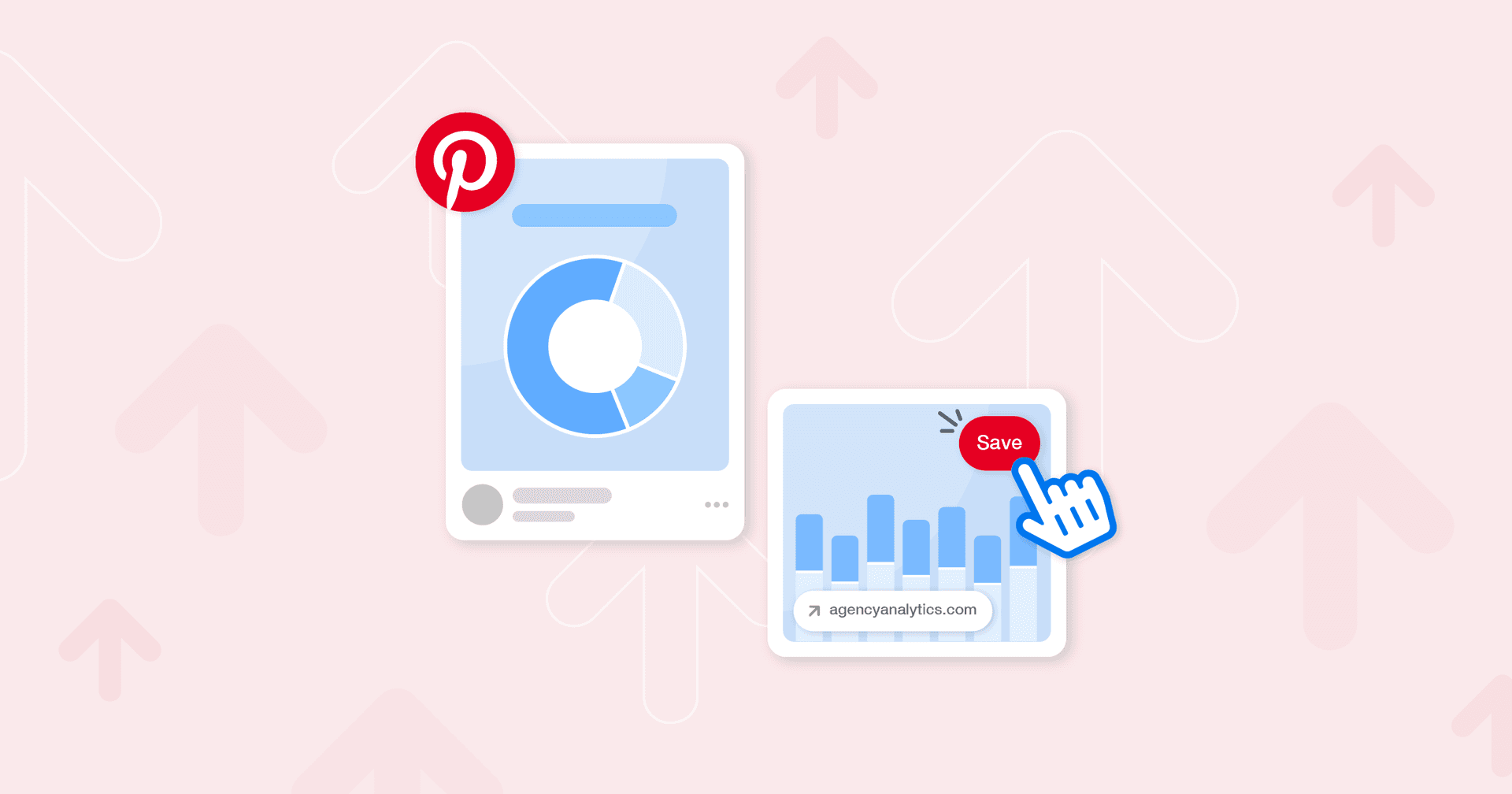Table of Contents
QUICK SUMMARY:
An ecommerce sales funnel is a step-by-step process that guides potential customers from initial interest to final purchase. Building and optimizing this funnel is necessary to convert visitors into paying customers. This guide covers strategies for nurturing prospects, addressing buyer hesitation, and implementing automated systems to boost conversions and profitability.
When it comes to scaling an eCommerce store, building a high-converting sales funnel is essential to profitability and growth.
Since the vast majority of people won't convert on their first visit, you need to have systems and processes in place in order to nurture and convert these prospects into paying customers.
In this guide, we’ll discuss everything you need to know about bridging the gap from an initial visit to a first-time purchase, and ideally turn these buyers into loyal customers. In other words, we’re going to discuss an end-to-end eCommerce sales funnel, including:
What is an Ecommerce Sales Funnel?
The Stages of an Ecommerce Funnel
Step-by-Step: How to Build an Ecommerce Sales Funnel
Metrics to Track to Optimize Your Sales Funnel
Let’s get started.
What is an Ecommerce Sales Funnel?
Before we get into the details of building an eCommerce sales funnel, let’s first clearly define what it is. As mentioned, the vast majority of people that visit your eCommerce store won’t convert on their first visit—that’s to be expected.
An eCommerce sales funnel is the process of taking someone from their initial visit and moving them through the buyer’s journey to a paying customer.
There are many strategies to build an effective sales funnel, although at a high-level the ultimate goal is to remove any buyer hesitation and make the purchase process as seamless as possible. This can include a responsive customer support team to answer questions, a cart abandonment email series, or an iron-clad return policy. Whatever the case, your funnel needs to answer any buyer questions that will take them from product and brand awareness to a final purchase decision.
When done right, an effective eCommerce sales funnel can lead to significantly higher profits and also the ability to acquire new customers at a higher cost than competitors.
The Stages of an Ecommerce Sales Funnel
The success of an eCommerce funnel lies in addressing your customer's needs at each stage of their journey. To do this, you first need to know exactly where they are in the funnel. That said, before you start thinking about conversion rate optimization, you first need to answer a few questions such as:
What stage of the buyer’s journey is the prospect in?
What questions and concerns do they have at this stage?
How can you address these problems with your product pages, FAQ, or support team?
After answering these questions, you can identify where they are in the funnel. A typical eCommerce conversion funnel has three stages:
Awareness: The top of the funnel involves getting people aware of your brand, visiting your site, and interested in the products offered. Examples of metrics to pay attention to here include ad impressions, total sessions, and traffic sources.
Consideration: The middle of the funnel is all about getting your prospects to engage with the brand and consider making a purchase. Examples of metrics to pay attention to in this stage include time on site, time on page, pages per session, average session duration, and bounce rate.
Conversion: The bottom of the funnel is where you need to answer any final questions a prospect may have before making a purchase such as your and any answering individual product questions, shipping times, and return policy. Examples of metrics to review here include conversion rate, customer acquisition costs (CAC), and average order value (AOV).

If you want to learn more about tracking each of these metrics, check out our Guide to Getting Started with Google Analytics 4.
Step-by-Step: How to Build an Ecommerce Sales Funnel
Now let's look at various strategies you can use to seamlessly take visitors through each stage of the buyer's journey.
Step 1: Optimize Your Website & Product Pages for Conversions
Before even thinking about setting up retargeting or a post-purchase funnel, the first step is to build a website and product pages that buyers can trust. Since the majority of eCommerce transactions occur without any human interaction, this means leveraging a few key elements, including:
High-quality images
Product videos or animation
User-generated social proof
Testimonials and product reviews
A clear call-to-action (CTA)
To get an idea of how well your product page is performing, consider these average conversion rate benchmarks from Littledata’s survey of 1,990 Shopify stores in May 2020:
The average conversion rate for Shopify was 1.6%.
Less than 0.4% would put you in the worst 20% of Shopify stores
Higher than 5.1% would put you in the best 10%.
If you’re not hitting these benchmarks, go back through your product pages and keep optimizing and adding trust-building elements until you are.
Step 2: Product Copywriting
Another key element of product pages that deserves its own step is product copywriting. When it comes to online sales, an informed customer is much more likely to make a purchase. While you want to include all the product specifications, try and avoid boring bullet points and uninspiring features. Instead, speak directly to your ideal customer in a way that communicates the information they need, but also shows off your brand’s personality.
One great example highlighted in Sumo’s article on 10 Ecommerce Product Description Examples That Sell (Not Tell) is DollarShaveClub. Instead of the standard “not tested on animals”, they go with the much more memorable version: “Tested on interns, not animals”:

The key takeaway here that the author highlights is:
Humor is a powerful tool to not only help people remember your product over your competitors’ product but also to make influencing their purchase decision easier.
Step 3: Leverage FAQ’s, Reviews, and Support
Unless you’re selling on Amazon, the reality is that the majority of visitors to your eCommerce site will be first-time visitors. This means that you need to build their trust and answer any questions about their purchase. One of the best ways to do this is with an easy-to-find FAQ. If your FAQ doesn’t answer their question, your customer support team is the next line of defense.
You’d be surprised how many customers just want to confirm that you actually respond to support questions before making a purchase, so the importance of a responsive support team can’t be understated when it comes to your sales funnel; make sure to use an advanced email ticketing system or live chat to respond promptly.
We already mentioned the benefits of social proof reviews above, but keep in mind that user-generated reviews can also answer many first-time buyer questions for you. You can see the Canadian mattress brand Endy puts these three trust-building elements front and center in their header:

Step 4: Upsell & Offer Incentives
Increasing your average order value (AOV) is one of the best ways to scale an eCommerce store. To do so, you need to build upsells and incentives into your eCommerce funnel. Examples of effective upsells and incentives including product bundling, “buy more, save more” deals, and free shipping on orders over a certain price point.
Step 5: Setup Cart Abandonment
When it comes to increasing your optimizing your sales funnel, a cart abandonment email series is one of the quickest wins you can use to increase revenue. As the eCommerce software provider PrestaShop highlights:
Emails sent within 20 minutes after the abandonment of the cart obtain an average conversion rate of 5.2%.
A typical cart abandonment sequence will look something like this:
An immediate reminder sent within 15-30 minutes of abandonment
A second email is sent within 24 hours, typically with a discount
A “Last Chance” email (typically with a slightly higher discount) is sent within 2-3 days to create urgency
If you want to see examples of each of these emails, check out ActiveCampaign's article on 12 Abandoned Cart Email Examples You Can Use Right Now. If you're using ActiveCampaign for cart abandonment, you can check out our integration with the platform to report on your results.
Step 6: Retargeting
Regardless if a visitor has initiated the checkout process, it’s also generally a good idea to retarget them for at least 7-14 days to remind them about your products and company. With Facebook Ads, for example, you can use dynamic retargeting along with your product catalog to show visitors exactly what they checked out on your site.
Step 7: Build Customer Loyalty
Assuming you’ve implemented all of the previous steps, customers are now at the bottom of the funnel and have ideally made a purchase—but a good sales funnel doesn’t end there. It’s often said that your best customers are your existing customers, which means that you want to set up processes to bring them back to your store for repeat purchases. This can be done by offering rewards to your existing customers that incentivize them to make another purchase, or with a referral program. The key metric to look at in this stage is increasing your customer lifetime value.
Step 8: Start Driving Traffic
Now that you’ve got systems and processes in place for a high-converting eCommerce sales funnel, the final step is to build your traffic engine so that you have enough data to optimize over time. Check out this article from Shopify to learn more about increasing your website traffic with paid traffic sources such as Facebook, Instagram, Pinterest, and Google Ads.
Metrics to Track to Optimize Your Sales Funnel
Now that we’ve discussed the steps to set up an eCommerce sales funnel, let’s review a few of the most important metrics and KPIs to track in order to optimize your funnel over time. To do so, let’s look at our prebuilt eCommerce dashboard template.
Shopify Sales Breakdown
First off, we have a breakdown of your Shopify sales including:
Total refunds
Sales by channel

Below that, the dashboard breaks down sales further with metrics including:
Sales by referrer
Average order value
Average order goal
Shipping & taxes
Individual order breakdown



Save billable hours by streamlining your client reporting processes using a customizable Shopify dashboard template. Try AgencyAnalytics free for 14 days!
Ecommerce Advertising Breakdown
Finally, we have a section that breaks down sales from each paid traffic source. Keep in mind that this template just has a few of our 50+ integrations, although the dashboard can easily be customized with other traffic sources and ad platforms using our drag-and-drop editor:

Summary: Optimizing Your Ecommerce Sales Funnel
Optimizing your sales funnel is essential to the profitability and growth of an eCommerce store. The vast majority of visitors to your site are not going to convert on their first visit, so you need to build automated systems such as retargeting and cart abandonment to remind them about your brand. Also, since many visitors may not have heard of your brand before their initial visit, you need to build trust with user-generated content such as social proof and reviews.
Once you've got your sales funnel setup and you're driving traffic, don't forget to track your results at each stage of the funnel so that you know exactly what needs to be optimized over time. If you want to automate the tracking and reporting of these metrics, check out our prebuilt eCommerce dashboard template or a professional eCommerce report template.

Written by
Peter Foy is a content marketer with a focus on SaaS companies. Based in Toronto, when he’s not writing he’s usually studying data science and machine learning.
Read more posts by Peter FoySee how 7,000+ marketing agencies help clients win
Free 14-day trial. No credit card required.






